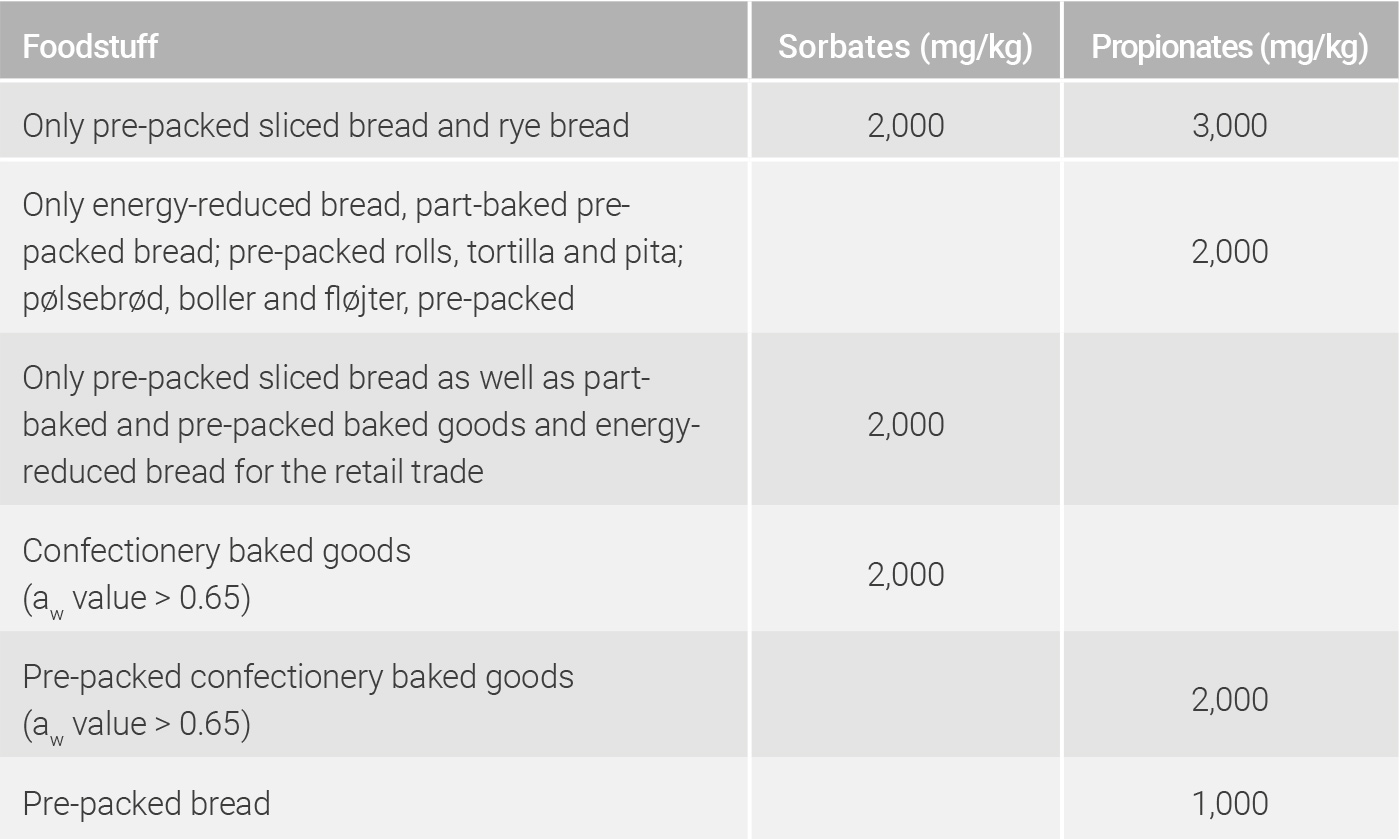With certain climatic conditions (high temperatures, high air humidity), the use of preservatives is practically unavoidable. This applies in particular to sensitive products such as toast bread, sandwich bread or brioche baked goods.
To extend the microbial keeping quality of pre-packed baked goods, sorbic acid, propionic acid and acetic acid can be used – taking legal regulations into consideration. As a rule, the salt of the corresponding acid is used here (e.g. potassium sorbate, calcium propionate, sodium diacetate). In Germany, the use of preservatives is laid down in the regulation on the approval of food additives. Here, corresponding maximum amounts for the individual preservatives for specific baked goods are listed.
Table 17.2: Maximum amounts of sorbates and propionates for certain baked goods (Regulation (EC) No 1333/2008)
Using sodium diacetate or calcium acetate alone only causes a short extension of the keeping quality. Acetates are often combined with sorbic acid, as the effect of the sorbic acid is heightened with low pH values.
Disadvantageous is the strong sensory influence as a result of the preservatives. From a certain quantity of addition, a clearly perceivable inherent smell and taste can be noticed. Moreover, the fermentation is inhibited which has to be balanced by higher additions of yeast. Over and above, the use of preservatives is met with rejection in many countries on the part of the consumer.

